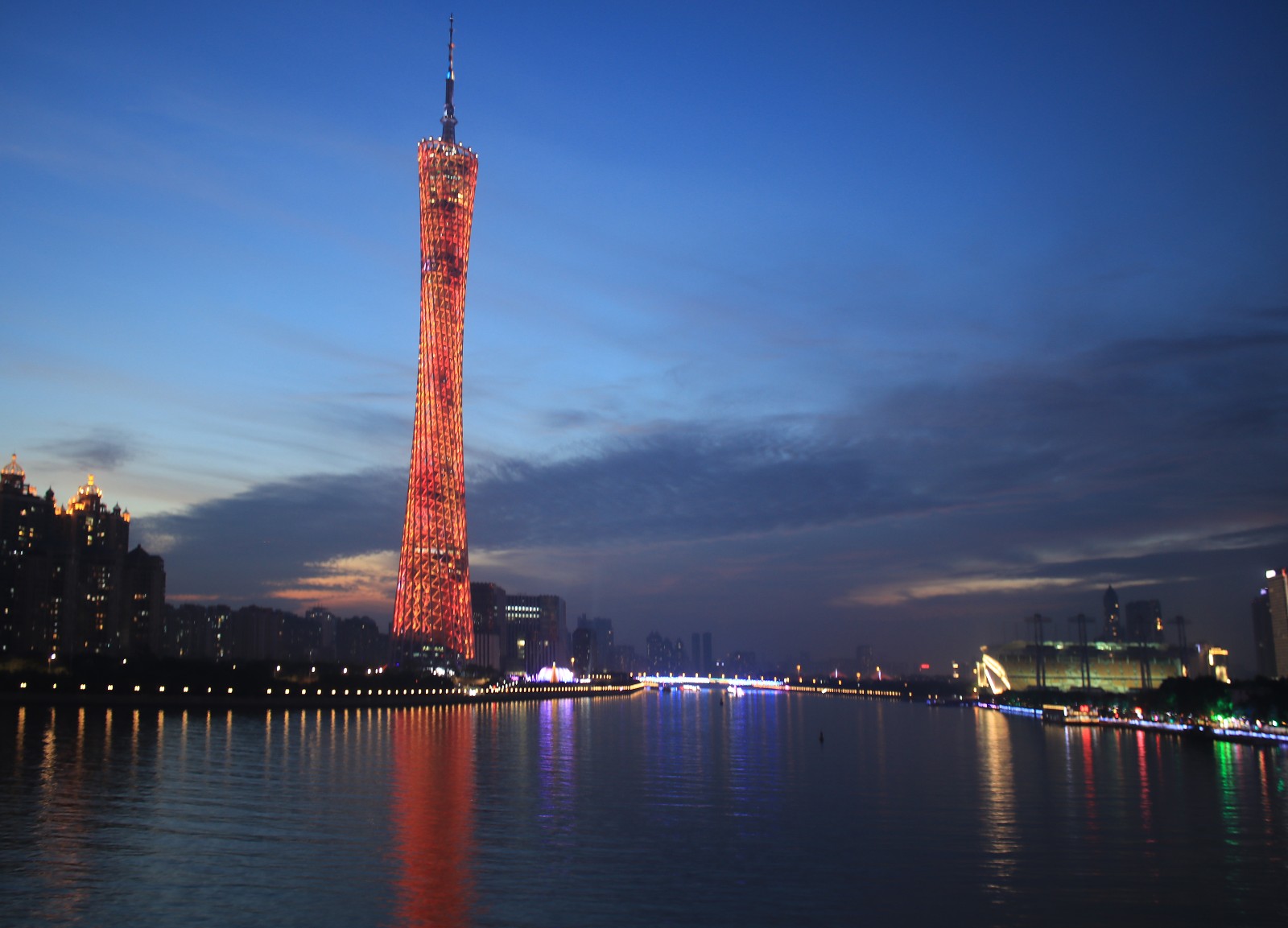Guangzhou, called Sui for short and also known as the City of Rams and the City of Flowers, is the capital of Guangdong Province and a megacity. It has been identified as a central city of remarkable importance, international trading center and comprehensive transportation hub in China with the approval of the State Council of P. R. China. As of 2018, the city had 11 districts under its jurisdiction, and covered an area of 7,434 km², of which the built-up area was 1,249.11 km²; its permanent population reached 14.9044 million with the urban population of 12.8744 million or 86.38%.
Guangzhou, located in the lower reaches of the Pearl River in South China and facing the South China Sea, is where the ground force headquarters of the PLA Southern Theater Command is located. The city, as a national logistics hub, a national comprehensive gateway city and one of the first open cities along the coast, functions as China's south gateway to the world, a central city of the Guangdong-Hong Kong-Macao Greater Bay Area and the Pan-Pearl River Delta Economic Zone, and a hub city along the Belt and Road.
Guangzhou is one of the first famous Chinese historical and cultural cities and also where Cantonese culture is produced. Time since the Qin Dynasty has seen it as the seat of local governments at various levels, which has now blossomed into the center of politics, military, economy, culture, and science and technology of South China. It was a standard port on the Maritime Silk Road since the 3rd century and developed into a national giant in the Tang and Song Dynasties or a world-renowned oriental port city before it became China’s only foreign trade port in the Ming and Qing Dynasties. It is the only everlasting port city spanning over 2 millennia on the planet.
According to the latest world city ranking issued by Globalization and World Cities Research Network (GaWC), this southern Chinese city has been included into the alpha category of first-tier global cities. The China Import and Export Fair held in the city every year has attracted a large number of travelling traders, foreign-funded enterprises, and Fortune 500 companies for investment. Currently, the city is home to more than 8,700 national high and new tech companies, ranking top 3 in the country with regard to the quantity, and has pooled as high as 80% colleges and universities and 70% technicians in the province. It ranks top one domestically concerning its total number of college students.
The city ranks 1st at home in terms of the human development index and 3rd by the national central city index. It was at number 2 in Forbes China’s 2017 Best Cities For Business List, and at number 3 amid China’s Top 100 Cities.







